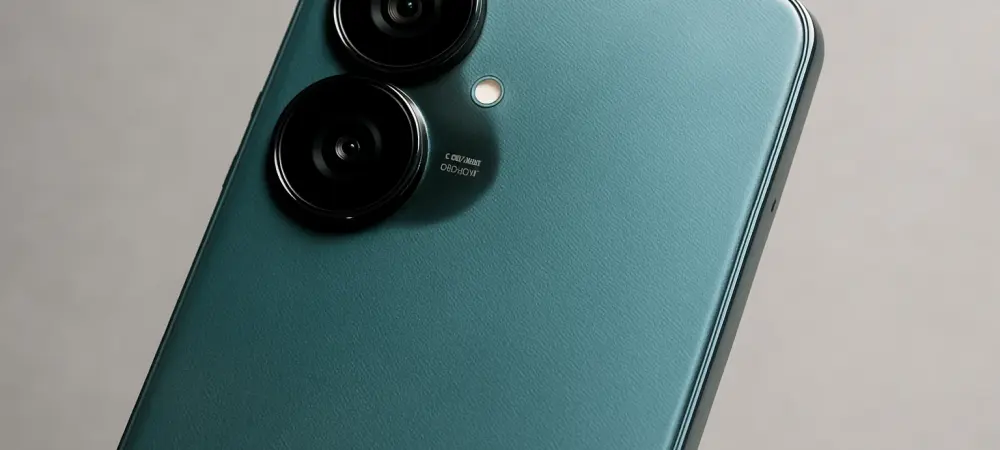In the rapidly evolving landscape of mobile technology, Dominic Jainy stands out as a seasoned IT professional with profound knowledge in artificial intelligence, machine learning, and blockchain. Immersed in the technological advances across various sectors, he’s here to dissect the latest unveiling—the Realme Note 70T. This device has just made waves in Europe, revealing various aspects that tech aficionados are eager to learn about.
Can you provide more details about the Realme Note 70T’s camera capabilities?
The Realme Note 70T stands out with its dual-camera setup featuring a 50MP main sensor and a 13MP ultra-wide lens. The primary camera should deliver a robust photography experience, given its high resolution. Though there’s a gap left around video capabilities, I expect it can adeptly handle standard HD formats, which should suffice for day-to-day recording needs. The lack of 4K might be a limitation for those keen on ultra-high-definition content creation, but the ultra-wide option adds diversity, allowing users to capture more expansive shots.
What is the significance of the Unisoc T7250 processor in the Realme Note 70T?
The Unisoc T7250 processor is pivotal for the Realme Note 70T, offering a balanced performance with its 12nm architecture. The integration of Cortex-A75 and Cortex-A55 CPU cores suggests efficiency and moderate power handling. This should provide a satisfactory everyday experience, optimizing battery usage while supporting essential tasks. However, gaming enthusiasts or power users might find its computational strength a bit limiting when compared to more premium chips.
How does the Realme UI 5.0 enhance the user experience for the Realme Note 70T?
Realme UI 5.0, based on Android 15, comes with advanced customization options and improved aesthetics. It tailors the interface to enhance usability, making navigation and multitasking smoother. Features like personalized themes and enhanced security settings contribute significantly to user satisfaction. This UI version should bring a visually appealing interface, aligning with the hardware to deliver an agile smartphone experience.
Can you explain the functionality of the notification LED placed on the back of the Realme Note 70T?
The rear notification LED, part of the camera island’s light ring, is an intriguing touch for notification alerts. This choice is likely to make it more visible during daily use and adds a design flair to the device’s back. Functionally, it aligns with indicators for incoming calls, messages, or alerts, potentially reducing the need to turn the device to confirm notifications. It’s a novel approach that merges functionality with aesthetic value.
What are the pros and cons of having a 6.74″ LCD with 720p+ resolution and 90Hz refresh rate in the Realme Note 70T?
This combination offers a substantial display size with fluidity in motion through the 90Hz refresh rate, contributing to delightful scrolling and light gaming experiences. The 720p+ resolution aligns with basics but may not satisfy those accustomed to finer details often sought in full-HD or higher displays. While the refresh rate is a positive attribute for smoother visuals, pixel density could be a sticking point for users craving richer viewing experiences in multimedia consumption.
With only 4GB of RAM, how does the Realme Note 70T perform in multitasking and running demanding apps?
In today’s context, 4GB is on the lower end for seamless multitasking and handling demanding applications. While it should handle routine tasks and moderate app usage efficiently, running several high-performance apps concurrently might present noticeable lag. Users may need to manage background apps actively to optimize performance, highlighting a somewhat restrictive multitasking capacity.
What are the benefits and limitations of the 6,000mAh battery and its 15W charging capability in the Realme Note 70T?
The 6,000mAh battery is undeniably a strong suit, promising extended use with up to two days of operational longevity under normal conditions. The limitation, however, rests in the 15W charging speed. While it facilitates charged mobility, users will need patience for full recharge cycles. This offers durability over speed, which can influence usage patterns significantly.
Could you elaborate on what “ArmorShell Protection” and MIL-STD-810H testing mean for the Realme Note 70T?
The “ArmorShell Protection” signifies resilience. Meeting the MIL-STD-810H standards, the device should cope robustly with environmental stress, indicating enhanced durability in certain adverse conditions like extreme temperatures or drops. This feature enhances its appeal to users looking for fortified phones that can endure everyday and demanding environments.
How has the IP54 rating been implemented in the Realme Note 70T to ensure splash-proof protection?
IP54 ensures a degree of defense against dust and water. While not fully water-resistant, this rating provides peace of mind in splashes from rain or spills. The implementation should safeguard internal components effectively, offering operational security without jeopardizing functionality in light exposure scenarios.
In what ways does the Realme Note 70T differ from the Realme Narzo 80 Lite 4G, and why were these changes made?
Both devices share core essentials like the chipset and design framework. However, the Note 70T introduces superior camera specifications and a larger battery capacity. These changes might cater to different consumer segments, where photography enthusiasts and power users require more capable devices. Such enhancements refine product differentiation and meet diverse user expectations across the board.

